2010-2015 Chevrolet Camaro Parts Buying Guide, Maintenance, and More
The Chevrolet Camaro was a staple of the muscle car scene from the late 1960s through to the early 2000s. Then, in 2002, Chevrolet discontinued its iconic pony car, citing poor sales due to a lack of demand for sporty coupes. When Chevrolet brought the Camaro muscle car back in 2010, it borrowed a page from the Ford Mustang’s playbook by styling the new car to recall the original Camaro of the late 1960s.
Whether you’re buying a fifth-generation Chevrolet Camaro for its looks, its performance, or some combination of the two, we’ve put together an article that will help guide you with information about common issues, maintenance requirements, and replacement parts.
For more information about the fifth-generation Chevrolet Camaro, refer to our table of contents.
Table of contents
- Fifth-Generation (2010-2015) Chevrolet Camaro Specifications
- 2010-2015 Chevrolet Camaro Problems
- 2010-2015 Chevrolet Camaro Gas Mileage
- 2010-2015 Chevrolet Camaro Recalls
- 2010-2015 Chevrolet Camaro Common Replacement Parts: Wheels
- 2010-2015 Chevrolet Camaro Headlights
- 2010-2015 Chevrolet Camaro Windshield Wipers
- 2010-2015 Chevrolet Camaro Engine Air Filter
- 2010-2015 Chevrolet Camaro Cabin Air Filter
- 2010-2015 Chevrolet Camaro Tires
- 2010-2015 Chevrolet Camaro Front Bumper
- 2010-2015 Chevrolet Camaro Oil Filter and Engine Oil
- 2010-2015 Chevrolet Camaro Battery
- 2010-2015 Chevrolet Camaro Spark Plugs
- 2010-2015 Chevrolet Camaro Taillights
- 2010-2015 Chevrolet Camaro Brake Pads
- 2010-2015 Chevrolet Camaro Maintenance Schedule
- 2010-2015 Chevrolet Camaro Accessories and Modifications
- 2010-2015 Chevrolet Camaro Frequently Asked Questions (FAQs)
Fifth-Generation (2010-2015) Chevrolet Camaro Specifications
If you had bought a brand-new 2010 Chevrolet Camaro, you would have been given the option of two engines. First was a 3.6-liter V6 (304 hp/273 lb-ft of torque) and an available 6.2-liter V8. Both were offered with six-speed manual and six-speed automatic transmissions, and the V8’s output depended on which gearbox it was connected to: with the automatic, it generated 400 hp/410 lb-ft, while the manual got 426 hp/420 lb-ft.
In 2011, the V6 engine gained 8 horsepower for a new total of 312, and its power increased again in 2012 to 323 hp. Also in 2012, Chevrolet added a ZL1 trim level with a supercharged 6.2-liter V8 that made 580 hp and 556 lb-ft of torque.
Then, in 2014, a Z/28 model arrived with a 7.0-liter V8 that made 505 hp and 481 lb-ft and came only with a manual transmission. The 2014 Chevrolet Camaro also received refreshed interior and exterior styling. V6-powered trim levels were LS and LT; the naturally aspirated V8 came standard in the SS model, the supercharged V8 was exclusive to the ZL1, and the 7.0-liter engine was limited to the Z/28.
Fifth-generation Chevrolet Camaro models in LS and LT trims rode on 245/55R18 tires, while LT could be optioned with 245/50R19, 245/45R20, or 245/40R21 sizes. The Camaro SS came with staggered tires sized 245/45R20 in the front and 275/40R20 in rear, and could be optioned with larger 285/35R20 tires front and rear.
The ZL1 trim came with 285/35R20 front tires and 305/35R20 rears, and Z/28 models got 305/30R19 tires all around.
2010-2015 Chevrolet Camaro Problems
Be aware that the 3.6-liter V6 may consume oil and its timing chain may wear prematurely. The V6’s direct-injection fuel delivery system allows carbon deposits to build up on the intake valves. This is not a critical issue, but it means you’ll have to get the intake tract cleaned periodically to ensure smooth, efficient performance.
If your Camaro is hard to restart shortly after you turn it off, it could be because of a starter motor that gets overheated due to its position next to the engine. Another cause could be a bad starter motor electrical ground.
Watch for a faulty shift interlock in cars with the automatic transmission, which can cause the key to get stuck in the ignition when you turn the car off.
When test driving a manual-transmission Camaro, listen for a grinding noise when shifting from first to second gear.
Finally, an infotainment touchscreen that responds slowly or crashes may simply need a software update, or you may be forced to replace the system’s hardware.
2010-2015 Chevrolet Camaro Gas Mileage
With the V6 engine, the fifth-generation Chevrolet Camaro’s fuel economy is rated anywhere between 17 mpg city/27 mpg highway and 19 mpg city/29 mpg highway.
The naturally aspirated 6.2-liter V8’s estimates fall between 15 mpg city/24 mpg highway, and the ZL1’s supercharged V8 is rated for anywhere from 12 mpg city/18 mpg highway to 14 mpg city/19 mpg highway.
Finally, the 7.0-liter V8 in the Z/28 trim comes with fuel economy estimates of 13 mpg city/19 mpg highway.
2010-2015 Chevrolet Camaro Recalls
Chevrolet recalled a large number of fifth-generation Camaro sports cars because of complaints that it was easy to accidentally turn the ignition off if the driver’s knee hit the key.
Chevrolet issued another campaign in 2009—just after the fifth-gen Camaro went on sale—to fix a battery cable that could short out and cause the car to stall or catch fire.
There are two other notable recalls: one addressed a bolt in the seat height adjustment mechanism that could fall out and cause the driver’s seat to suddenly drop to its lowest position; the other deals with a driver’s side front airbag that could fail to deploy in a crash.
2010-2015 Chevrolet Camaro Common Replacement Parts: Wheels
Black wheels can really enhance the look of a car, especially when installed to contrast with a white body or to complete the appearance of an all-black “murdered-out” vehicle. OE Wheels LLC makes an aftermarket 20-inch black wheel in the style of the Camaro SS’s 20-inch design. While they come with plain black center caps, you can replace them with the Camaro's stock center caps.
If you want an aftermarket wheel that works well with the fifth-gen Camaro’s retro styling, check out the gorgeous Ridler Style 685 rim, which is available in 18- and 20-inch sizes. We like the way this wheel’s machined lip contrasts with the gray five-spoke design.
2010-2015 Chevrolet Camaro Headlights
If you need to replace damaged OEM headlight housings on your fifth-generation Camaro, ACANII makes an affordable set that will fit 2010-2013 models. This is an excellent value if you’re looking to preserve your car’s stock appearance while keeping it street legal: these lights meet all U.S. DOT headlight regulations.
If you’d prefer to upgrade to something a little flashier, have a look at these aftermarket Camaro headlights from AmeriLite. These lights incorporate an LED daytime running light like you’ll see on many modern vehicles, but they are designed to replace your Camaro’s stock headlights with no modifications necessary for your car. They also use inexpensive halogen headlight bulbs similar to those your car came with from the factory.
Chevrolet refreshed the Camaro’s styling in 2014, which means that 2014 and 2015 models use a different headlight design than 2010-2013 cars. Yuanzheng makes a stylish aftermarket headlight that is a direct-fit replacement requiring no modifications to install. These headlights use LED bulbs for excellent nighttime visibility and feature a combination LED parking light/turn signal that lights up sequentially when you signal a turn to lend your sporty coupe a high-tech twist.
Chevrolet Camaro models sold from 2010-2013 use H13 halogen headlight bulbs. Sylvania makes an excellent high-end replacement in its SilverStar Ultra line, which promise brighter, whiter light than the brand’s entry-level lights. They’re also designed to cast more light farther down the road and improve your nighttime visibility so you can drive your sporty coupe anywhere, anytime with ultimate confidence. The refreshed 2014 Camaro switched to H11 headlight bulbs, for which Sylvania also makes replacements under its SilverStar Ultra line.
2010-2015 Chevrolet Camaro Windshield Wipers
Your Camaro’s windshield wipers don’t come with a specific replacement interval. Instead, you’ll know it’s time to put new ones on the car when they begin to leave behind streaks or chatter as they move across the glass. If your Camaro’s wipers are noisy and streaky, Trico sells a set of driver-side and passenger-side wipers that are easy to install for a quick return to clear and quiet visibility. As an added bonus, this kit also includes a microfiber cloth ideal for wiping down your Camaro’s interior display screens, rearview mirror, and the inside of the windows.
2010-2015 Chevrolet Camaro Engine Air Filter
When it comes time to replace your Camaro’s engine air filter, it’s a good idea to upgrade from the basic filter that came in the car from the factory. EcoGard makes a direct-fit replacement air filter for the Camaro that provides at least as much protection for your engine as the OEM filter design, but at a more affordable price. Replacing the air filter is a simple job you can do in your driveway and helps extend the life of your Camaro’s high-performance engine.
2010-2015 Chevrolet Camaro Cabin Air Filter
The other air filter you must replace periodically on your Camaro is the one in the HVAC system. Bosch makes the 6054C HEPA cabin air filter as a direct-fit replacement for the Camaro’s OEM part. Despite being designed as a drop-in part, the 6054C is a high-efficiency filter that traps pollen, mold, and allergens before they get inside your car’s cabin. This filter is also imbued with an odor neutralizer to help provide truly clean air for you and your passengers.
2010-2015 Chevrolet Camaro Tires
The 2010-2015 Chevrolet Camaro’s available V6 and V8 engines offer a wide range of performance. If you bought your V6-powered Camaro more for its looks than outright speed, it may not be worth the money for you to install high-performance tires on the car. If all you want is reliable grip for your Camaro LS or LT, consider the BFGoodrich Advantage T/A Sport all-season tire. It comes in the 245/55R18 size specified for entry-level Camaro models sporting a continuous center rib for constant contact with the road, and is constructed for confident handling and high-speed stability at an affordable price for an 18-inch size.
At the opposite end of the Camaro spectrum, the SS and ZL1 trims and their V8 engines play in a different league than the car’s V6 models, so you need tires that can keep up. The Michelin Pilot Sport 4S is a summer-only tire whose design was inspired by the performance demands of the 24 Hours of Le Mans endurance race. The outside of the tread is optimized for dry-road handling, while the center section is geared towards wet conditions. The Pilot Sport 4S carries a Z speed rating that helps it stand up to the demands of track driving as well as enthusiastic on-road performance.
2010-2015 Chevrolet Camaro Front Bumper
Repairing your Camaro after a collision can be a painstaking process, especially if you are trying to return your car to its OEM appearance without spending thousands upon thousands of dollars. AutoPartsGiant sells this affordable bumper cover under its Garage-Pro brand. It comes primed but unpainted, so you can do your own paint job or have a body shop do it for you. Note that this bumper cover does not have provisions for the Camaro’s tow hook or the parking sensors that were an optional extra on the 2010-2013 Camaro.
Another option is Extreme Online Store’s complete Camaro ZL1-style front bumper kit. While it’s more expensive, it comprises everything you need to rebuild your Camaro’s front fascia, with a bumper cover, upper and lower grilles, lower lip splitter, fog lights, and fog light bezels. Extreme Online says this kit will fit all 2010-2013 Camaro models, as well as the 2014-2015 ZL1. If you drive a 2010-2013 base model Camaro, this kit will give your car the sportier appearance of the ZL1 model.
2010-2015 Chevrolet Camaro Oil Filter and Engine Oil
Chevrolet recommends 5W-30 engine oil for most Camaro models driven in most conditions. Mobil 1 says its 5W-30 synthetic oil helps protect your engine from sludge and deposit build-up, heat, and oxidation, which are among the factors that cause accelerated wear. Meanwhile, this oil is formulated to provide quality lubrication for up to 10,000 miles between oil changes, making it well-suited to the Camaro’s long oil-change intervals.
If you drive the track-oriented Camaro Z/28, Chevrolet recommends 15W-50 oil, which provides better engine protection at the high engine temperatures that track driving tends to generate. Mobil 1 makes a full synthetic 15W-50 oil that is formulated for race applications and promises exceptional wear protection.
The Chevrolet Camaro’s 3.6-liter V6 uses a replaceable oil filter element instead of the spin-on filters found on many cars. At the factory, Chevy installs the ACDelco PF2129 oil filter in the 3.6-liter engine. The 6.2- and 7.0-liter V8s use a more common spin-on filter under ACDelco part number PF48. We recommend sticking with these OEM parts at replacement time to ensure good engine protection and so that you don’t void your Camaro’s warranty.
2010-2015 Chevrolet Camaro Battery
Being a modern car with a sophisticated electrical system, the Chevrolet Camaro depends on its battery to provide strong voltage for the powertrain’s electronic controls and the infotainment, HVAC, and other systems you operate inside the cabin. Many odd vehicle behaviors can point to a weak battery that needs to be replaced. The Camaro uses a group size 94R battery (it may also be listed under group size H7), which is located in the trunk. If you prefer to keep your car as stock as possible, the ACDelco Gold 94RAGM is well matched to the Camaro’s needs with 850 cold-cranking amps (CCA) for reliable starting in warm or cold weather.
Your Chevrolet Camaro came standard with remote keyless entry, which is controlled via the key fob. If the system stops working or only works when you’re close to the car, the key fob’s CR2032 battery may need to be replaced. This Duracell four-pack will allow you to replace the batteries in both key fobs and leave you with spares for next time one of the batteries goes dead. These Duracells promise a long service life and have a best-before date of 2030, so it won’t hurt them to sit around for a few years. In addition, these batteries are coated with a bitter-tasting compound to discourage young children from accidentally ingesting them.
2010-2015 Chevrolet Camaro Spark Plugs
Chevrolet fits the Camaro’s 3.6-liter V6 engine with ACDelco spark plugs bearing the 41-109 part number, while the V8 engines use similar plugs with part numbers 41-104 and 41-110. These are proven OEM parts that promise to last a long time: Chevrolet says the spark plugs in most Camaro models only need to be changed every 97,000 miles. The only difference is the Camaro ZL1, which needs new plugs every 60,000 miles. Your Camaro’s spark plugs have a simple job, and it’s best to stick with the parts that were designed specifically to fit the engine in the model you drive.
2010-2015 Chevrolet Camaro Taillights
Replacing your 2010-2015 Chevrolet Camaro’s taillight housings takes a bit of research, because not only do 2010-2013 and 2014-2015 use different taillight designs, but the earlier models have four distinct light pods with two per side, while the newer models use a single unit on each side.
JP Auto sells direct-fit OEM-look replacements for the 2010-2013 Camaro’s taillights. These straightforward units let you replace damaged lights while maintaining your car’s stock appearance.
If you drive the refreshed 2014-2015 Camaro and want to replace its OEM taillights with something flashier, AmeriLite makes a good-looking set that combines LED lighting with smoked lenses that lend your car a sleeker appearance.
Both of these taillight options meet the USA’s federal safety standards for vehicle lighting.
If all you need are replacement light bulbs to fix burned-out taillights, the 2010-2013 Camaro uses 3157-style bulbs, while the 2014-2015 model takes 7443 bulbs. Popular brands like Philips and Sylvania make inexpensive replacements that promise long service life.
2010-2015 Chevrolet Camaro Brake Pads
Chevrolet doesn’t list the Camaro’s brake pads in the car’s maintenance schedule because their replacement interval depends on how much you drive your car, the routes you routinely travel, and your driving style.
No matter how or where you drive, however, you will eventually need to replace your Camaro’s brake pads. When the time comes, we recommend buying a complete set of front and rear pads; even if you only need to replace the front pads, this way you’ll have the rear pads on hand. We recommend this Detroit Axle front and rear brake pad kit for its ceramic compound, which can handle higher brake temperatures and generate less dust. They also promise to be quieter than more conventional semi-metallic pads.
2010-2015 Chevrolet Camaro Maintenance Schedule
Chevrolet says the Camaro’s engine oil should be changed at least once a year, or according to the car’s maintenance monitor system. When it flashes the “change engine oil soon” warning in the gauge cluster, you should get an oil and filter change done within the next 600 miles of driving. If you accidentally reset the oil life monitor, Chevrolet suggests changing the oil and filter no more than 3,000 miles after the last change.
Change the Camaro’s transmission fluid (automatic and manual) every 45,000 miles, and replace the rear axle lubricant every 7,500 miles.
The Camaro’s engine coolant, brake fluid, and clutch fluid should be drained, flushed, and refilled every 150,000 miles.
The Camaro’s spark plugs should be replaced every 97,000 miles, except for the ZL1, which needs new plugs every 60,000 miles.
For most models, the engine air filter must be changed at least every 45,000 miles, but the ZL1 and Z/28 require more frequent filter replacements every 15,000 miles. Meanwhile, Chevrolet says to replace the cabin air filter at 25,000-mile intervals.
2010-2015 Chevrolet Camaro Accessories and Modifications
If you're keen to play up the fifth-generation Camaro's retro styling, take a look at these rear window louvers from Cumart. This was a popular muscle car styling treatment in the segment's 1970s heyday, and it works well on the modern Camaro, too. This is a well-made kit that is easy to install with double-sided tape, and the side louvers are removable in case you need to clean off the glass.
And if you only drive your Camaro in fair weather and will store it in the winter months, you will want to protect your car's finish while it's off the road. To do that, use a high-quality cover like the one Car Dress makes specifically for the fifth-generation Camaro coupe, complete with pockets for the side mirrors. This cover is designed to keep dust off the car during indoor storage, and is not intended to protect the car's finish from rain and snow.
2010-2015 Chevrolet Camaro Frequently Asked Questions (FAQs)
A: Prices on used fifth-generation Camaros vary greatly depending not just on the quality of the car, but the trim. You can find clean early-year V6 models for around $10,000, with V8 models commanding almost double that. Looking at the rare ZL1 and Z/28 models? Be prepared to pay around $40,000 for a tidy example.
Q: How many miles will the 2010–2015 Chevrolet Camaro last?
A: Being an affordable sports car, the Camaro's longevity is very dependant on how hard it's been driven. If you're in the market, take a close look at the service history.
Q: Which 2010–2015 Chevrolet Camaro model year is best?
A: The general consensus is that the 2013 model is the sweet spot of the fifth-generation range. It's the last pre-facelift model, but maintains the powerful V6 and V8 engine options.
Q: What are the most common 2010–2015 Chevrolet Camaro problems?
A: Most complaints about this generation of Camaro revolve around the paint and clearcoat quality. Many owners report the paint is quick to damage, more so than other cars of the same age. Other issues include stretched timing chains, and occasional spluttering at low engine speeds.
Q: Is the 2010–2015 Chevrolet Camaro comfortable?
A: This is a muscle car: that's not really it's goal! That said, the Camaro is a fine cruiser, especially in less aggressive V6 form. The tiny windows make it hard to see out of, however, which can make it particularly cumbersome to drive in crowded city centers.
We are committed to finding, researching, and recommending the best products. We earn commissions from purchases you make using the retail links in our product reviews. Learn more about how this works.
More by Chris Chase




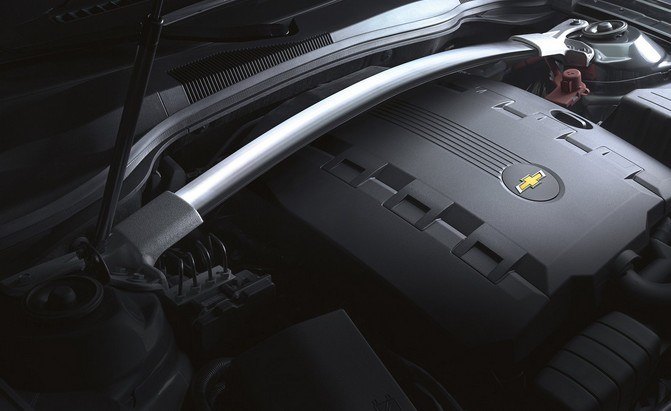




























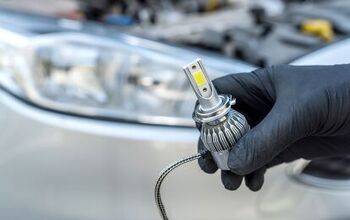


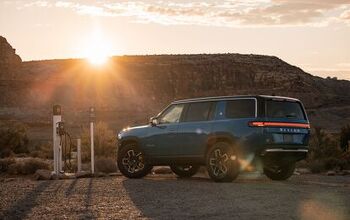



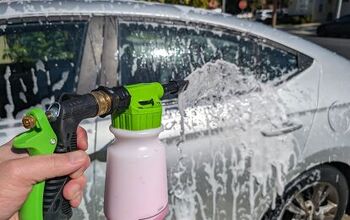


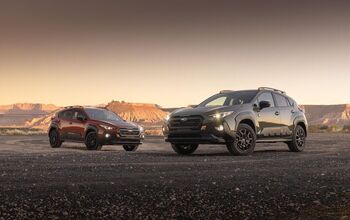
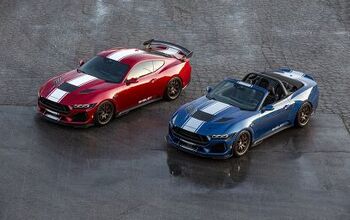


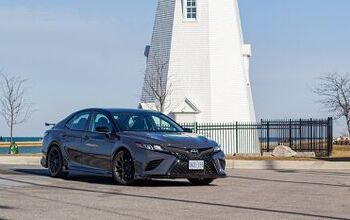
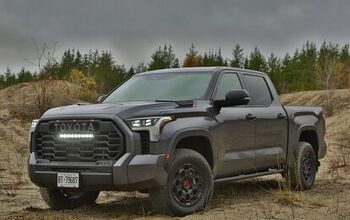


Comments
Join the conversation
Well as long as there isn't any issues with the system and she is a garage queen ( only driven short good weather trips and stored in the garage most of the time) then I would just leave it alone. If it has set a code or you have found cracking or damage to the lines of any kind or if you just want to do preventive mantinence I would go ahead and change it at 100,000 miles. 50,000 if you drive it more like the car was designed for. I am a Tech at a GM dealership and that's my routine I have with my 2010 Victory Red 2SS.
What other.cars use the same starter as for my 2014 Camero V6!